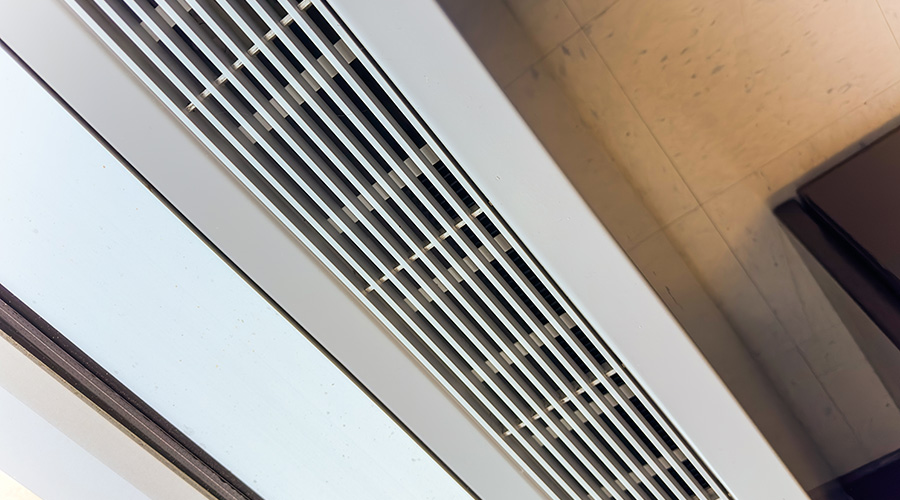Measuring Contaminants Not As Easy As it Seems, May Not Be Necessary
Ideally, ventilation rates in a facility are high enough to remove airborne contaminants quickly enough so that they don't reach unhealthy concentrations. But some facility managers want to be sure, and therefore may take the additional step of measuring particular contaminants they may be worried about — especially if there is a known source in the building of a particular contaminant. But experts suggest that measuring contaminants only for the sake of measuring may not be cost- or time-effective.
"You can spend a lot of money measuring all sorts of indoor contaminants, but I'm not sure how far that gets you," says Persily. "If you measure, you need a specific reason and a specific goal, or you'll just end up with a lot of numbers that are really hard to interpret."
There may be hundreds of different contaminants in a building, and trying to measure them all is an exercise in futility. "IAQ is so complex," says Cull. "You can be doing great with one contaminant, but awful with another."
So, again, look for specific contaminant sources and head those off first. Some examples: Is the janitor's closet full of old paint cans? Are harsh cleaning chemicals causing discomfort? Are permanent markers used in conference rooms? Is new carpet off-gassing at a higher-than-expected rate? "The most important thing is source control," says Cull. "That means finding the problem and getting rid of it at its source."
Once you've pinpointed and eliminated these sources, if there are still contaminants you're worried about, you can take measurements then. This can be done with pieces of equipment like a photo ionization detector or by hiring a consultant to come take air samples.
ASHRAE 62.1 Appendix B provides a list of acceptable levels of some of the more common contaminants, like carbon monoxide, radon, formaldehyde and sulfur dioxide. In fact, ASHRAE 62.1 provides two avenues of compliance. The first is the Ventilation Rate Procedure, which just involves totaling up all the CFMs for a space. The second, much trickier method of compliance, is called the IAQ Procedure, which involves taking measurements of a variety of contaminants in a space. "The IAQ Procedure is an option for those who want to do innovative things to reduce ventilation rates and still provide good IAQ," says Hedrick. "It's a workable procedure, but it requires a lot of information, so it's difficult."
One other source to consult for contaminant levels is EPA's Building Assessment and Survey Evaluation (BASE) study. This involved a survey of 100 random office buildings for contaminant levels and then calculating normal levels for those contaminants.
As Cull says, the goal for facility managers shouldn't be to try to establish indoor air with a "safe" level of contaminants, because there's still much debate about what level of particular contaminants is safe. "Instead, what you should be focusing on is what is normal and figuring out whether you're above or below normal."
Occupant Satisfaction
One way to determine what is normal is to simply ask occupants for their opinion of IAQ. Do an occupant satisfaction survey, the results of which can provide another IAQ metric — and one you can easily benchmark against as time goes on.
"Pay attention to occupants and encourage them to let you know about issues," says Hedrick. "You want them to feel comfortable telling you when something's wrong."
Feedback and complaints from occupants are really valuable sources of information, say experts. Not only that, but looking at absenteeism rates and health care costs, and the trends of those metrics, may provide insight into how good the building's IAQ is. "Not many facility managers go to the time and trouble to look at those things as indicators of IAQ," says Bearg. Perhaps they should.
As Persily says, "IAQ isn't going to be good all by itself. It takes time and effort, but there is a payback." That payback: Happier, more comfortable and more productive occupants.
Related Topics:












